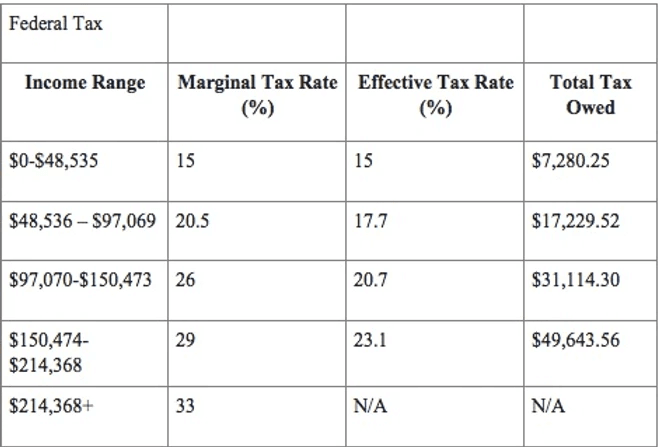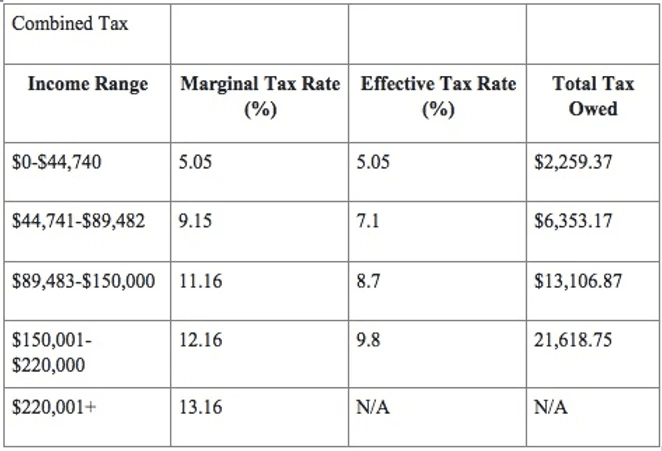Are you sure about your tax liability? Many taxpayers fall into the tempting trap of simply googling the tax percentage for the tax bracket they fall into, without ever understanding how marginal tax rates actually work. This can lead to the common misconception that a higher paycheck can lead to a lower overall income after tax. This article will debunk those misconceptions and cover other commonly-forgotten tax considerations such as provincial taxes and different types of income tax.
What is a Marginal Tax System?
Without understanding Canada’s progressive marginal tax system, it can seem like a pay raise pushing you into the next tax bracket leads to a lower overall income after taxes. A marginal tax system means that you will only be taxed on the portion of your earnings that fall into the next tax bracket, rather than the entire amount of your income being subject to a higher tax. A good way of thinking of tax brackets is like ‘pockets’. Once each pocket is filled up, then any earnings in excess of that amount spill over into the next pocket. Only the amount that spills into the next pocket is subject to the higher tax rate. This effectively means that a pay rise is always a good thing, and you’ll always walk away with more money after tax.
What is the 2020 Provincial Income Tax in Ontario?
In Canada, you are subject to pay provincial tax in addition to federal income tax. The tax brackets for these are quite different. The type of income you earn can also lead to a different type of tax. Ontario operates a similar marginal tax rate to the federal tax rate, as detailed in the tables below. The tax rate and total tax for the highest earners are blank, as there is no maximum specified income amount.


How does income type affect tax rates?
Different types of income are subject to different top combined marginal tax rates (federal + Ontario provincial tax):
- Employment income is subject to 53.53% top marginal tax rates
- Capital gains are subject to 26.76% top marginal tax rates
- Eligible dividends are subject to 39.34% top marginal tax rates
- Non-eligible dividends are subject to 47.74% top marginal tax rates
Most taxpayer’s incomes will be a combination of these types, where others won’t be paying top marginal tax rates at all. In these cases, it can be complicated to calculate the overall marginal tax rate. To avoid any unexpected taxes, it is advisable to consult with an expert accountant to ensure that you have correctly calculated your combined tax rates.
How can different tax rates work to your advantage?
An experienced accountant can help you to take advantage of different tax rates by developing a personalized tax strategy for you. By prioritizing earnings in low tax rate categories, you can generate significant tax savings. Other types of strategies include income splitting between yourself and your lower-earning family members and the use of prescribed interest loan rates. Other types of tax planning include estate freezes. Take advantage of these times of low valuation to make the most out of your potential tax savings, and consult with us today.
